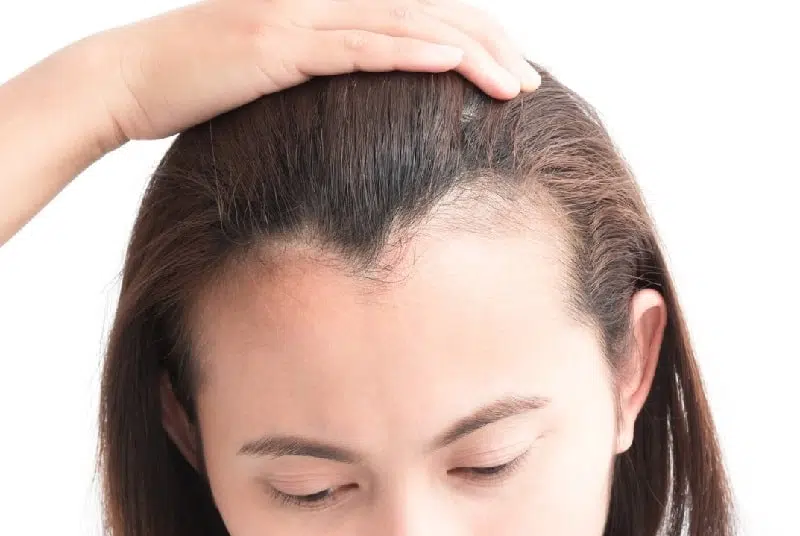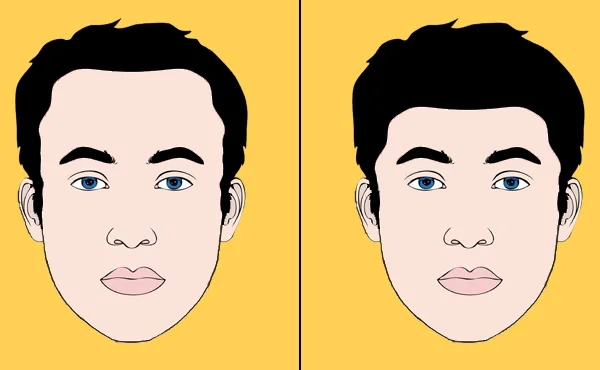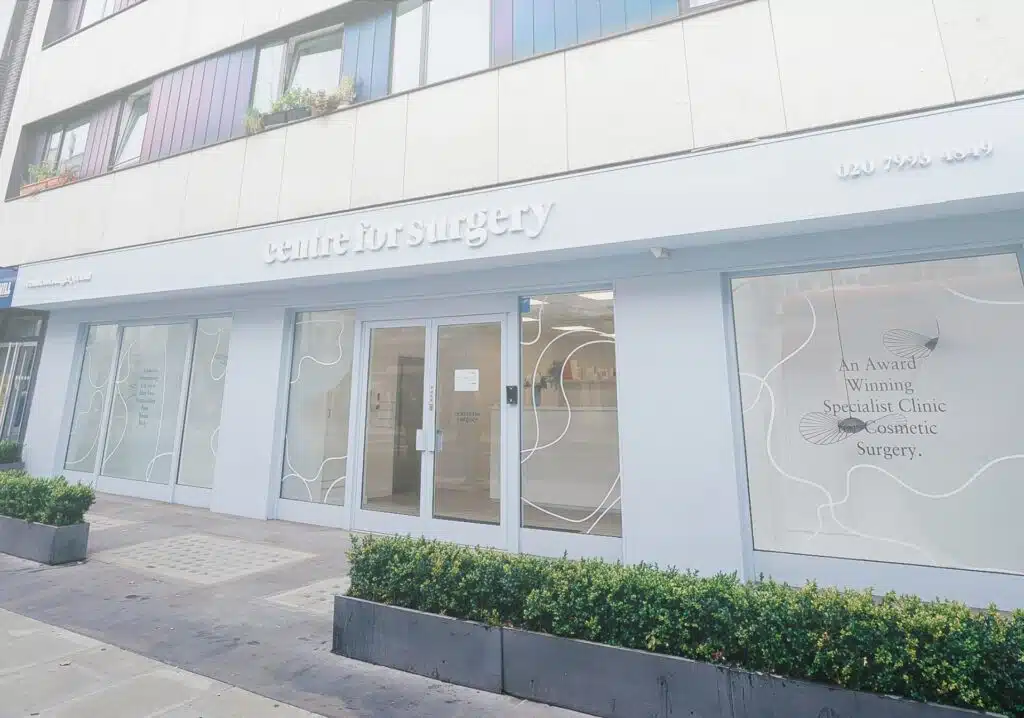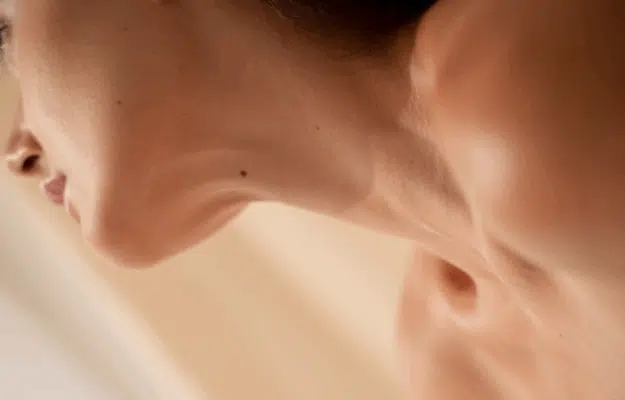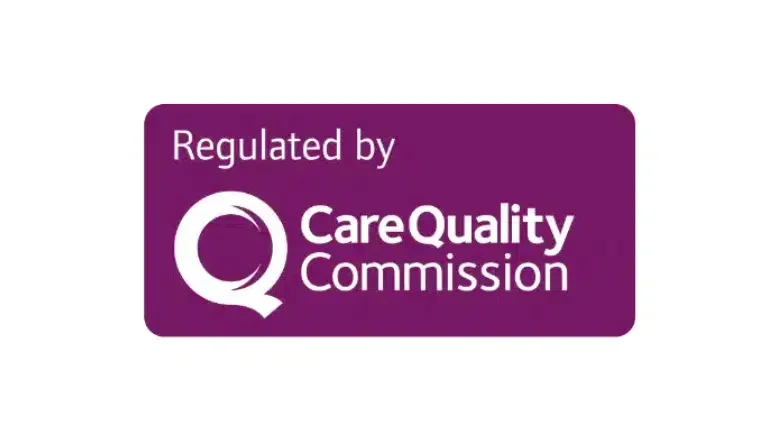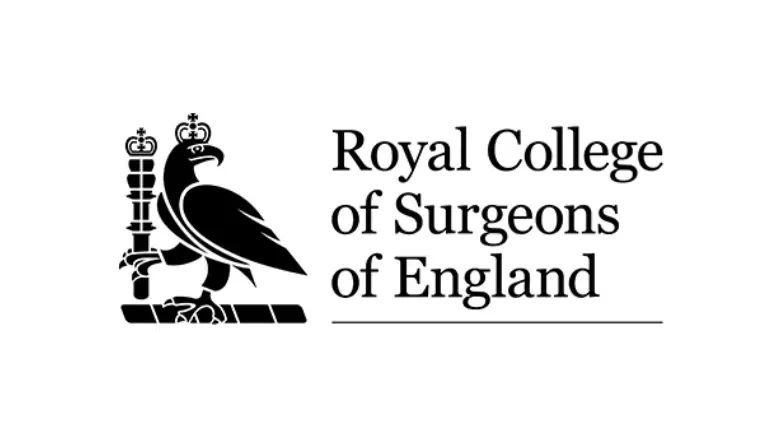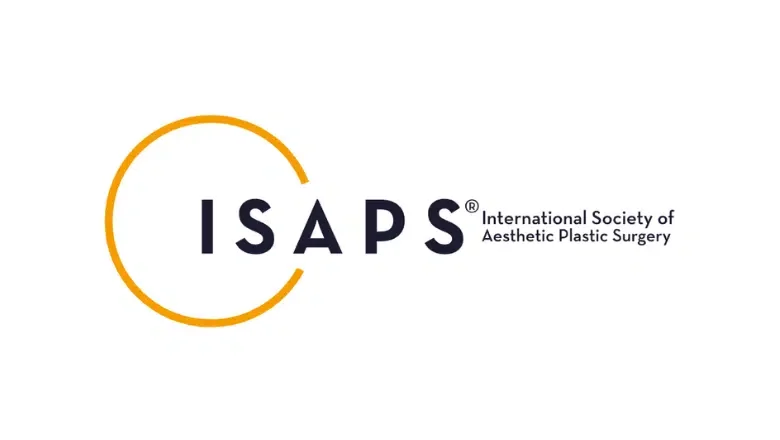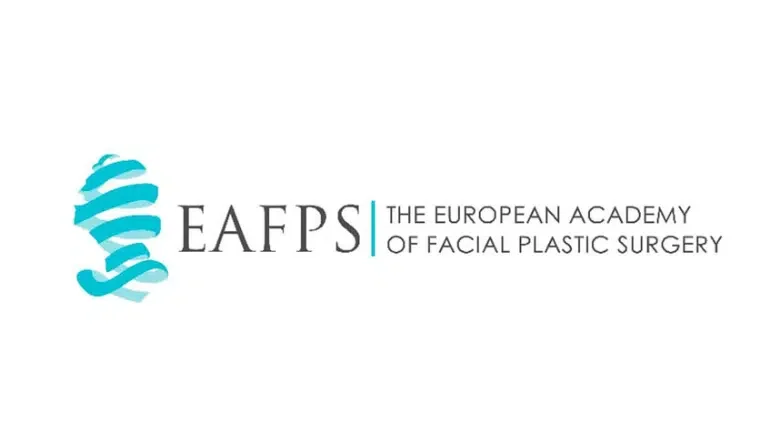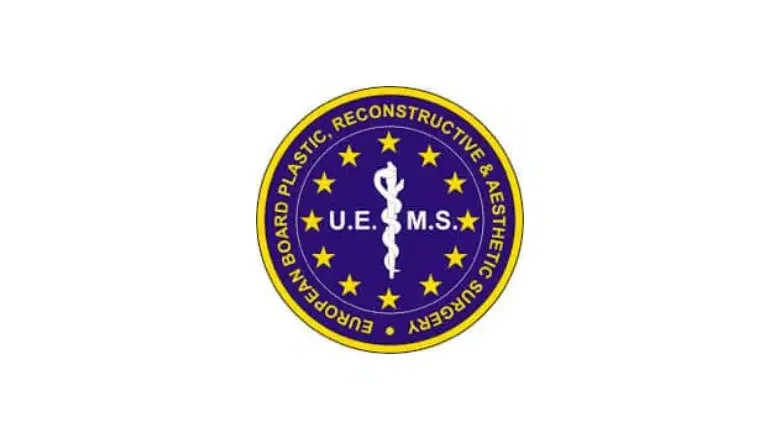Hairline Lowering Surgery in London
Having a large forehead can be a significant source of concern for many people. A big forehead can often appear out of proportion with the rest of the facial features and lead to a reduction in self-confidence and emotional well-being. Patients may feel very self-conscious about having a large forehead and may choose to wear hats to cover up having a high hairline.
RELATED: Forehead Reduction Surgery
The impact on daily activities can be significant, with many avoiding going outdoors or carrying out sporting activities for fear of showing their big forehead. In many cases, people may develop anxiety and depression. Fortunately, there are highly effective treatments for forehead reduction to restore facial balance and boost self-confidence. The procedure can be combined with forehead contouring surgery to reshape the forehead for a more feminine look.
What is Hairline Lowering Surgery?
Hairline-lowering surgery is a surgical procedure designed to lower the height of the hairline and reduce the size of a big forehead. Some alternative terms for hairline lowering include forehead reduction, scalp advancement, and frontal hairline advancement.
The desired result is a full head of hair due to a lower hairline. The procedure is performed almost exclusively in women, where up to 5 cm of shortening can be created in certain cases. In some cases, to further contour the hairline, a hair transplant procedure can be performed to reshape the hairline, which can create a more feminine, rounded appearance to the sides of the hairline. In cases where more than 5 cm of lowering is required, a 2-stage procedure with tissue expanders may be necessary to achieve the required level of hairline lowering.
The upper third of the face and hairline is a key aspect of defining one’s gender because it forms the framework for the whole face. Hairlines in men tend to sit further back on the skull than in women. This gives the impression of a larger and more prominent forehead in men. In women, the hairline sits at a lower position and takes on a more rounded appearance than the square-like appearance found in men. For many women with higher hairlines, the hairline can be lowered into a more female type of hairline with smooth curved lines, leading to overall facial harmony and balanced aesthetics. An excessively high hairline can lead to a reduction in self-confidence and may lead many women to reduce the number of hairstyles they choose to have, as the main priority is always to cover a large forehead.
Causes of an excessively high hairline:
An excessively high hairline can be caused by several factors, including:
Genetics
A high hairline can be an inherited trait that runs in families.
Hormonal changes
Hormonal changes during puberty or menopause can cause the hairline to recede or shift.
Hair loss
Certain medical conditions or treatments, such as chemotherapy, can cause hair loss and a receding hairline.
Ageing
As we age, our hairline can recede naturally due to the loss of hair follicles.
Trauma or injury
Trauma or injury to the scalp can cause scarring and a higher hairline.
Previous hairline lowering surgery
If not done properly, a previous hairline-lowering surgery can result in a higher hairline in some cases.
Benefits of Hairline Lowering Surgery
Improved facial balance
A high hairline can make the forehead look disproportionately large in relation to the rest of the face. By lowering the hairline, the overall balance of the face can be improved, giving a more aesthetically pleasing appearance.
Boost in self-confidence
Many people feel self-conscious about their high hairline and may avoid certain hairstyles or hats to cover it up. Hairline lowering surgery can help to restore confidence and allow individuals to feel comfortable in their own skin.
Youthful appearance
An excessively high hairline can make a person look older than their actual age. Lowering the hairline can make the forehead look more youthful and give a more refreshed appearance.
Permanent results
Hairline lowering surgery is a permanent solution to a high hairline. Unlike temporary treatments such as fillers or wrinkle relaxing injections, hairline lowering surgery provides long-lasting results that do not require repeated treatments.
Improved hair density
In some cases, hairline lowering surgery can also help improve hair density in the front hairline area. This can be particularly beneficial for those with thinning hair or a receding hairline.
Am I suitable?
All patients should be in good health and have realistic expectations about what can be achieved with hairline lowering surgery.
- Women may derive greater benefits than due to the risk of ongoing hair loss in men.
- Women with a higher than normal hairline and a larger forehead
- Thinner forehead skin with a greater capacity to be stretched (good skin laxity)
- Men are also good candidates if they have a thick well-defined hairline without a history of previous hair loss
We do not treat patients below the age of 18 years of age.
Healing is better if patients refrain from or quit smoking.
Who should not have hairline lowering:
- Patients with unrealistic expectations
- Patients who have had a previous traditional brow lift
- Men with a severely receding hairline
Preparation for Hairline Lowering
Patients who smoke will be advised to stop for at least two weeks before the date of their procedure. Smoking has detrimental effects on circulation and is well known to slow the healing process. All medications, prescribed and over-the-counter, will be reviewed. Aspirin and aspirin-containing medicines should be stopped both before and after surgery. Aspirin and NSAIDs impair the body’s natural clotting process and may cause bleeding complications after surgery. If you require pain relief after surgery, paracetamol is advised.
Surgical techniques for hairline lowering & forehead reduction
Hairline lowering is an outpatient surgical procedure, meaning you will be admitted and discharged on the same day, which allows you to recover in the comfort of your own home. The procedure can be performed under either a general or a local anaesthetic. However, our surgeons recommend TIVA general anaesthesia for optimal comfort. The surgeon begins by marking the location of the planned new hairline. The incision is performed in a zig-zag configuration to closely resemble a natural-looking hairline’s appearance.
RELATED: Will I Have Visible Scars after Hairline Lowering Surgery?
The skin above the marked new hairline is surgically removed. The skin margins are then carefully sutured together in 3 layers to reduce the tension on the superficial aspects of the incision. As the incision is sutured, the new hairline is surgically lowered to the planned marked position. Your surgeon may choose to use non-dissolvable sutures, which are removed at your follow-up appointment, as these give much better scar cosmesis than dissolvable sutures. During the healing process, hair follicles will regrow through the incision line, which helps to disguise the appearance of the resulting scar.
Where the hairline needs to be advanced more than 5cm, then a 2-stage procedure is necessary. In the first stage, a temporary implantable device called a tissue expander will be inserted to place the forehead skin on stretch. The tissue expander is essentially an inflatable balloon that, when inflated beneath the skin, will stretch the skin. The balloon is inflated by injecting a sterile saline solution. The tissue expander is left in for approximately 4-6 weeks before being removed, and the surgical hairline advancement takes place in the second procedure.
In some cases, your surgeon may recommend a third-stage hair transplant procedure to increase the density of the hair follicles. The skin placed on stretch by the tissue expander often reduces the density of hair follicles as they are spaced further apart.
Recovery after Hairline Lowering Surgery
After hairline lowering surgery, patients can typically return home the same day. The recovery period can vary depending on the extent of the surgery, but most patients can return to work or school within 7-10 days.
During the first few days after surgery, patients may experience some discomfort, swelling, and bruising. Pain medication may be prescribed to help manage any discomfort. Swelling and bruising can be minimized with the use of ice packs and keeping the head elevated as much as possible.
Patients should avoid strenuous activity and heavy lifting for at least 2-3 weeks after surgery to allow for proper healing. Hair washing can typically be resumed within a few days of surgery, but patients should be careful to avoid rubbing the incision site.
It can take several months for the full results of the hairline-lowering surgery to be visible. In the meantime, patients may experience temporary numbness or itching in the scalp, which is normal and should subside over time.
What are the potential risks of hairline lowering?
Hairline lowering surgery is a commonly performed procedure at Centre for Surgery. At your consultation, your surgeon will discuss the potential risks and complications associated with the scalp advancement procedure.
Risks of forehead reduction surgery
- Anaesthetic complications
- Postoperative bleeding
- Excessive scarring
- Delayed wound healing
- Hair loss around the incisions
- Nerve injury leading to numbness
- Facial nerve injury
- Surgical site infection
- Brow asymmetry
- Requirement for a revision procedure
How long does hairline lowering surgery last?
Hairline surgery is often considered a permanent solution for those looking to reshape their hairline and achieve a more balanced appearance. The procedure involves removing a portion of the forehead skin to reposition the hairline, effectively bringing the hair forward and creating a shorter-looking forehead. For many, this surgery offers transformative results that can last a lifetime. However, the permanence of the results can depend on individual factors, particularly genetic predispositions to hair loss.
RELATED: How Long Does Forehead Reduction Surgery Last?
Why Hairline Surgery Offers Long-Term Results
The primary reason hairline surgery is considered a lasting solution is the nature of the procedure itself. By physically altering the position of the hairline through the removal of excess skin, the results are not reliant on temporary methods like hair transplants or medication. Once the hairline is repositioned, it stays in its new location indefinitely. For most individuals, this means they can enjoy the benefits of the surgery for the rest of their lives.
The Role of Genetics in Hairline Longevity
Despite the permanence of the surgical technique, genetic factors can influence the long-term outcome. Individuals with a family history of hair loss may experience some degree of recession over time, even after surgery. This is because the hair follicles are subject to the same hereditary influences that may lead to thinning or loss. For this reason, you must have a detailed consultation with your surgeon before undergoing hairline surgery. During this consultation, the surgeon will assess your risk of future hair loss and plan the incision accordingly. This careful planning ensures the most natural and enduring results, even if some recession occurs later in life.
How Hair Loss Patterns Differ Between Men and Women
Hairline surgery outcomes can vary between men and women due to differences in how hair loss typically manifests. Women are less likely to experience significant hairline recession after surgery. Instead, they may develop thinning hair at or just behind the hairline over time. This thinning does not usually affect the position of the hairline itself, meaning the surgical results remain largely intact. In these cases, the incision scar is typically well-hidden, as the surrounding hair continues to provide adequate coverage.
For men, the situation can be more complex. Male-pattern baldness often involves hair loss at the temples and along the hairline, which can alter the shape and appearance of the hairline over time. This makes careful planning even more critical for men considering hairline surgery. Surgeons must consider the potential for future hair loss and position the hairline in a way that will maintain a natural look for as long as possible.
What Is the Cost of Hairline Surgery?
The cost of hairline surgery typically starts at £ 5,500 in the UK. However, the exact price can vary significantly based on several key factors, including the surgeon’s expertise, the complexity of the procedure, and the type of anaesthesia used.
RELATED: How Much Does Hairline Lowering Surgery Cost?
Hairline lowering and forehead reduction costs will vary depending on the extent of surgical correction required. Our patient coordinator team will be able to give you an accurate costing after your consultation.
At Centre for Surgery, we have partnered with the most experienced consultant plastic surgeons with expertise in forehead reduction surgery and hairline lowering. If you are interested in hairline lowering, get in touch with us today to book a consultation. Once you have had a consultation, you’ll be given a detailed quotation by your dedicated patient coordinator. The price of forehead reduction surgery includes the following:
- In-depth consultation with an expert surgeon.
- Treatment at our state-of-the-art Baker Street clinic in Marylebone.
- Advanced anaesthesia techniques allow you to recover in the comfort of your own home later the same day.
- Dedicated assistance from our post-operative nursing team to make sure your healing is smooth.
- Your own patient coordinator to act as a point of contact throughout your patient journey with us at Centre for Surgery.
Forehead reduction surgery and hairline lowering are unavailable on the NHS, as the procedures are designed to improve cosmetic appearance rather than address a medical condition.
Procedures commonly combined with hairline lowering:
Hairline lowering can be performed as a standalone procedure, but it is often combined with other procedures to achieve the desired aesthetic result. Some of the procedures commonly combined with hairline lowering include:
Forehead contouring
Forehead contouring surgery reshapes the forehead to make it smoother and flatter, and it can be done at the same time as hairline lowering.
Brow lift
A brow lift can lift the eyebrows and reduce wrinkles in the forehead, and it is often combined with hairline lowering to enhance the overall appearance of the forehead.
Blepharoplasty
Blepharoplasty is also known as an eyelid lift and is often performed in conjunction with hairline lowering to rejuvenate the entire upper face region.
Facelift
A facelift can be performed along with hairline lowering to reduce the appearance of wrinkles and sagging skin in the lower face and neck.
Rhinoplasty
Nose reshaping surgery can also be combined with hairline lowering to achieve a more harmonious facial appearance.
Is Hairline Lowering Worth it?
What are the alternatives to hairline surgery?
Hair transplant surgery is an effective alternative to hairline lowering and forehead reduction surgery. This procedure involves the removal of donor hair from thicker areas of the scalp, most commonly located at the back of the head. The two most commonly performed types of hair transplant include follicular unit transplantation (FUT) and the newer follicular unit extraction (FUE). FUE involves the removal of individual follicular units from the back of the neck before placing them into the desired area using a specialist hair implantation device. FUT involves surgically removing a horizontal strip of hair-bearing scalp from the back of the head. Individual follicular units are extracted from this strip before implanted into the desired areas. Hair transplant surgery can produce natural-looking hairlines, which can be customised to the individual patient’s forehead shape. Hairlines can be created so that they appear straight or curved. Forehead reduction surgery can complement hair transplant surgery for making highly customised hairlines, particularly those with a V-shape.
Hair transplant surgery can result in thick hair in the hairline for those affected by thinning or thinner hair. This can help to reduce the appearance of a prominent forehead. Forehead reduction surgery requires mobilisation of the scalp to bring it lower. A certain degree of scalp laxity is necessary to facilitate adequate skin stretching. Hair transplant surgery does not have the exact requirement. The main requirement for a successful hair transplant is sufficient donor sites for hair removal, which can then be used at the hairline. Although hair transplant surgery is prevalent in men experiencing a hairline recession or a receding forehead, it is much more prevalent in women. Forehead reduction surgery involves making an incision in the hairline. FUE hair transplants do not result in visible scarring at donor and recipient sites. FUT hair transplants are mainly known for producing visible scars at the back of the head, and this type of hair transplant technique is performed less commonly nowadays in the UK.
Hair transplant surgery can take a minimum of eight weeks before results become evident. The benefit of forehead reduction surgery is that the procedure can produce results which are visible straight away. It can take many months for people who have had hair transplant surgery to notice results.
However, the lack of scarring is enough for many people to prefer hair transplants, particularly if they are experiencing hair thinning at the hairline area. Choosing between forehead reduction surgery and FUE hair transplant depends on your tolerance for scarring. Well-performed hairline-lowering surgery produces scars that can be well hidden within the hairline.
Hair transplants are safe and effective, with tens of thousands of procedures in the UK each year. Hair transplant surgery is a viable alternative method of forehead reduction. Other alternatives to reduce the size of a big forehead include a surgical brow lift. Brow lift surgery is designed to lift a sagging brow by tightening the forehead skin to leave a smoother appearance. The level of the eyebrows, particularly at the outer part, can also be raised to reduce the appearance of a large forehead and rejuvenate the upper one-third of the face.
RELATED: What is a Brow Lift?
We recommend having a detailed consultation with an expert consultant plastic surgeon at Centre for Surgery to discuss the most appropriate treatment options.
Why choose Centre for Surgery for Hairline Lowering Surgery?
Centre for Surgery is a leading cosmetic surgery clinic in London, offering expert hairline lowering surgery for patients looking to reduce the height of their forehead and achieve a more balanced facial proportion. Our highly experienced consultant plastic surgeons specialise in hairline advancement, using advanced techniques to create natural-looking and harmonious results.
With a state-of-the-art facility located on Baker Street, our clinic is equipped with the latest surgical technology, ensuring the highest standards of safety, precision, and patient care. Whether you are looking to lower your hairline for aesthetic reasons or to correct a naturally high forehead, our team is committed to delivering exceptional outcomes tailored to your unique needs.
Personalised Consultations for Natural and Balanced Results
During your in-depth consultation, you will meet with one of our expert surgeons to discuss your goals and expectations. Your surgeon will carefully assess your hairline, scalp laxity, and facial proportions to determine the best approach for achieving your desired results. You will also have the opportunity to review before and after photos of previous patients and ask any questions about the procedure, potential risks, recovery, and scarring.
At Centre for Surgery, we believe in transparency and patient education, ensuring you feel fully informed and confident before proceeding with surgery. No GP referral is required, and our patient coordinators are available to assist with scheduling and answering any queries.
Patient Testimonials
“After years of feeling self-conscious about my high forehead, I finally decided to have hairline lowering surgery at Centre for Surgery. The results are incredible – my face looks more balanced, and my confidence has skyrocketed. The whole process, from consultation to recovery, was smooth and professional.” – Emma S.
“I was nervous about undergoing surgery, but the team at Centre for Surgery made me feel at ease. My surgeon took the time to explain everything in detail, and the results exceeded my expectations. My hairline looks completely natural, and the scar is barely visible.” – Daniel K.
“I highly recommend Centre for Surgery for hairline lowering surgery. The level of care and expertise is outstanding. My results look amazing, and I finally feel comfortable with my appearance. I wish I had done it sooner!” – Sophia M.
Finance Options for Affordable and Flexible Payments
We understand that cosmetic surgery is an investment in your confidence, which is why we offer finance options to make hairline lowering surgery more accessible. Our team can guide you through the available payment plans, helping you find the best option to suit your budget.
Learn More and Book Your Consultation
To learn more about our highly experienced surgical team, visit our Meet The Team page.
Discover what makes Centre for Surgery the trusted choice for hairline lowering surgery by visiting our About Us page.
For expert insights, patient experiences, and detailed procedure guides, explore our Plastic Surgery Blog.
For common concerns and frequently asked questions, visit our Clinic FAQs.
To book a consultation, contact us at 0207 993 4849 or email contact@centreforsurgery.com. Our team is here to guide you through every step of your hairline lowering surgery journey at our world-class Baker Street clinic.
FAQs
-
How can I lower my hairline?Lowering the hairline is often achieved through a surgical procedure known as hairline advancement or forehead reduction surgery. This technique involves carefully repositioning the scalp to reduce the height of the forehead, creating a more balanced facial appearance. It is commonly performed alongside forehead contouring surgery, which reshapes the brow bone and forehead to achieve a softer, more feminine look.
-
What is hairline lowering?Hairline lowering is a surgical procedure that involves lowering the position of the hairline on the forehead to achieve a more proportional and aesthetically pleasing appearance. The procedure is typically performed on patients with a high hairline or large forehead, or those who are experiencing hair loss due to aging or genetic factors. The surgery involves removing a small amount of skin from the forehead, then pulling the hairline forward and repositioning it to a lower level. This results in a more balanced and harmonious facial appearance, and can also help to improve self-confidence and self-esteem. Hairline lowering is a popular cosmetic procedure that is often performed in conjunction with other facial surgeries, such as brow lifts or eyelid surgery, to achieve optimal results.
-
Who is hairline lowering suitable for?Hairline lowering surgery, also known as forehead reduction, is suitable for individuals who have a high or disproportionate forehead and desire a more balanced and proportionate facial appearance. It is also suitable for those who feel self-conscious about their high hairline and wish to enhance their overall appearance and confidence.
Ideal candidates for hairline lowering surgery are generally healthy individuals who have realistic expectations for the outcome of the procedure. It is important for candidates to have good skin elasticity and not have any underlying medical conditions that could increase the risk of complications during or after surgery. Additionally, candidates should be non-smokers or willing to quit smoking for a period of time before and after surgery to promote proper healing.
The best way to determine if hairline lowering surgery is suitable for you is to schedule a consultation with a qualified and experienced plastic surgeon who can evaluate your individual needs and goals and recommend the most appropriate treatment plan. -
Is hairline lowering surgery painful?As with any surgical procedure, some level of discomfort or pain can be expected after hairline lowering surgery. However, the level of pain experienced can vary from person to person and can be managed effectively with pain medication prescribed by your surgeon. In addition, most patients report that any pain or discomfort is temporary and subsides within a few days to a week after the surgery. Your surgeon will discuss pain management options with you before and after the procedure to ensure you are as comfortable as possible during your recovery period.
-
When can I return to normal activities after forehead reduction surgery?The recovery time after forehead reduction surgery varies from person to person and depends on the extent of the procedure. Generally, most people can return to normal activities, including work and exercise, after about 2 to 3 weeks. However, it's important to avoid any strenuous activities or heavy lifting for at least two weeks after surgery to minimize the risk of complications and promote proper healing.
In the first few days after surgery, you may experience some swelling, bruising, and discomfort around the forehead area. Your surgeon may prescribe pain medication or recommend over-the-counter pain relievers to help manage any discomfort. It's also important to keep your head elevated and avoid bending over or lying flat on your back for the first few days to reduce swelling.
Your surgeon will give you specific instructions on when you can resume normal activities, based on your individual recovery progress. -
Will I have a visible scar after hairline lowering surgery?Yes, there will be a scar after hairline lowering surgery, but it is usually very fine and well-hidden within the hairline. The placement and length of the incision will depend on the individual's hairline and the extent of the procedure. The surgeon will make the incision along the hairline, carefully removing a strip of skin, and then repositioning the hairline to achieve the desired result. The incision is then closed with sutures. In most cases, the scar will be hidden within the hair and will fade over time, becoming less noticeable. Following the postoperative instructions provided by the surgeon can help promote optimal healing and minimise the appearance of scars.


